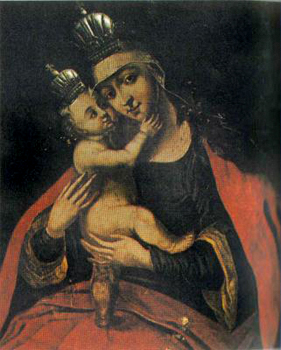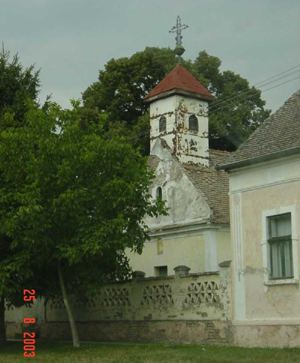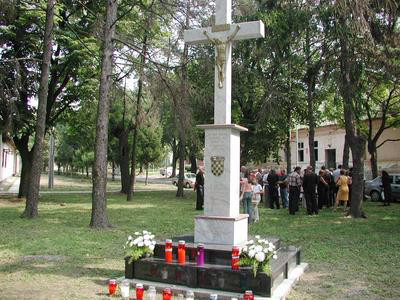|
History
of Sotting - Sotin
Part 1 |
Part 2
By the early 19th
century, many of Sotting's townspeople were Danube-Swabians and many
of them had resettled Sotting coming from Batschka NowoSelo, Neudorf
(Backa Novo Selo) and other villages from the Batschka (Ba?cska). The
"German Bauern" and other ethnic farmers who first settled
this region worked under the feudal system. Ban Josip Jellacic
(1801-1859) called for termination of serfdom and feudal dues, ending
the Sabor's feudal nature by calling general elections on May 18,
1848 and defense of Croatians' independence from the Magyars of
Hungary
Life was sometimes tough, for these
early inhabitants of Sotting. Hard work was the only means to
survival. Though life improved immensely by the late 1700?s, it
wasn't without hardship. In 1784 the Locust Plague greatly affected
the area. A few years later its reported that the great Plague of
Syrmien was taking many lives, Dr. Lujo THALLER book on the History
of medicine in Slavonia. Says the illness came about 5 years
following a war with Turkey, in July of 1795. About 4000 people
perished in Syrmien. The area was quarantined and an epidemiologist
from Budapest University Dr Franz SCHRAUD was dispatched. It took
about a year to contain.
Miraculous Picture of
the Lady of Sotin,
photo from booklet Cudotvorna Gospina Slika U Sotinu
|
 |
Since there was a
high infant mortality rate in those days, midwives were taught how to
baptize infants immediately upon birth. Many mothers also died during
childbirth, and it was not uncommon for a man to lose a wife and
remarry quickly out of necessity. Life was difficult, yet not
entirely dismal. Most people did not starve during lean years, in
most Donauschwaben villages. The farmers excelled in agriculture,
they had plenty of grain, fruits vegetables and their animal
husbandry was without comparison they had geese, ducks, goats (for
milk and cheese) cattle, pigs and chickens. They could also
supplement their diets with the bounty of the forests, which were
full of wildlife, mushrooms and berries. In addition, the rivers and
streams had fish. Disease outbreaks on occasion, decimated the
population, yet the birthrate exceeded the mortality rate. There was
time for singing, dancing, and music at wedding celebrations,
religious feasts, and church socials. Weekly Sunday mass gave
inhabitants a reason to put on their best clothes and participate in
christenings and confirmations as well.
|

The Serbian
Orthodox Church,
photo by Danil Vdovic 2003 |
|
Religion was very
active in the way of life of most inhabitants. Catholicism was very
prevalent in Sotting. The story of the Portrait of the Blessed Mother
can be found in the book Cudotvorna Gospina Slika U Sotinu
(Miraculous Picture of the Lady of Sotin) by author Mr. O. Placido
BELAVIC, University of Vukovaru,, 1909, After the Turks were driven
out, Franciscans missionaries came to many towns in the region. In
Sotting, they restored the Church dedicated to St. Lucas, the
Evangelist and St. Vito, the Martyr. In 1739 they brought the
Painting of The Blessed Virgin Mary to Sotting from Belgrade. This
Painting was known to be miraculous, and its fame attracted masses of
believers. At first, the picture was exhibited at the church in
modest surroundings during the time of Father Andrija DAVIDOVIC then
later, his successor Father Mihajlo JELASIC, who had several visions
of the Lady, displayed it in the church in Sotting. It was then
reported that several miraculous healings took place through Mary's
intervention, so in 1768 a new church was dedicated to Mary, the
Helpmate (a Votive Church ). The painting was hung above a highly
ornamented altar. Quite a range of interesting cases and many
healings through the divine intervention of The Virgin Mary are
listed in the book. |
In the late
1800's and early 1900's many people left Sotting, primarily for economic
reasons. From about 1900 - 1920, Sotting had had over two hundred
villagers pass through the gates at Ellis Island (USA) alone. Ellis
Island also seen well over 1000 local residents from surrounding
communities. The people leaving Sotting generally rode the train from Wukowar (Vukovar) and went to seaports in Germany
or
France to board steamships headed for the United States of America,
with many settling in the states of New York, Pennsylvania, and Ohio.
Many of the new immigrants found employment in mines and steel mills
or on farms. Croatia declared it's independence from the of Our Lady
of Sotting remains unknown.
Republic of Yugoslavia and the
Yugoslavian Army in 1991. During this conflict that began in August
of 1991., dedicated to Mary the Helper Sottings Catholic Church (St.
Mary the Helpmate / MARIJA POMOCNICA) was pillaged and severely
damaged. Sottings Serbian Orthodox Church, Church of the Translation of the
Relics of Saint Nicholas Church built in 1802 was also damaged.
|
Homes were damaged and It is reported that since the
conflict there are still about 45 Croatian people missing from Sotin
and assumed dead, also at the same time, it is reported that 150
Donauschwabens also died within Slovonia. Through fund raising
efforts of the late 1990's, the church in Sotting was approved for
rebuilding. In the interim, many daily Masses were celebrated at a
tent church erected in the center of Sotting. Where bereaved family
members mourned and prayed. Today the church St. Mary the Helpmate,
has been repaired. As of this writing, the fate of the Portrait |

Danil's home,
destroyed after the civil war in Croatia, 1991. This home was
also owned by the
Willeg family.
photo by Danil Vdovic |
As
a result of WW2, Croatia came under the Yugoslavian control of
Marshal Josip Broz Tito (1892-1980). Tito's persecution against the
Donauschwabens began almost immediately . This caused the deportation,
murder and mass exodus of many Danube Swabians. The area's demography again
changed dramatically. 50% of ethnic Germans left for Germany and Austria in
1944 before Yet through all of the hardship, some of the people that
remained kept their ethnic identity. While others ethnicity was melted in to
the populace.
|

Sotting's Village
Square in the 1990's,
photo by a friend |
|
However, under communism, after the war, public talk of the plight of
the Donauschwabens in Yugoslavia was frowned upon and ignored. This
subject remained closed until Croatia received its independence in
the 1990's. Though the plight of the Donauschwaben was well
documented, now the Croatian and Serbian intellectuals and historians
can pursue it as a research topic and publish information about it,
which they could not do while under Yugoslavia communism. The
practice of religion was reportedly discouraged under the communists.
Throughout the 18th & 19th centuries, Sotting's population was
90% Catholic. In 1921 there were 46% Germans, 26% Croats, and 19%
Hungarians. After WW2, Sotting was 69% Croatian and 28% Serbian. |
The
main road through Sotting is one long street with at most half a
dozen side streets expounding from it way. Sotting has around 330
households in 2001, with approximately 1,000 people. Though it is
considered part of Vukovar it is actually the first village south, on
the road leading to Opatovak and Ilok. There are trees, vineyards and
fields all around. The hamlet claims neither a gas station nor a
restaurant, but have a
printing
shop owned by the Lipovèeviæ family,
also a couple of cafés and workingman’s saloons. The
largest employer in Sotting, is a company called Abottoir. Which is
located just a few kilometers outside the village. Though the Danube
River is often fairly quite, due to some brief prejudicial conflicts
(because of its close location on the border with Serbia) and of
current economics. Sotting has returned to a peaceful, sleepy farming
village. Areas along the Danube River near Sotting provide many
recreational activities. The view of the River from Sotting is quit
spectacular. Fishing is also very popular on the Danube River were
anglers can catch carp, catfish, perch, pike, and a native European
fish called the sterlet. Hunting game in the outlying areas is also a
popular pastime.
Any
corrections or additions will be greatly appreciated. Croatian/
German translations needed.
Write
Kurt McCrary
Many
thanks to the people who contributed to this history including Robert
ZINK of the
DVHH onsai@hrcreditunion.net, Tatjana FORMER Tat417761@cs.com, "Frank KURCHINA"
<frankur@att.net,
Toni ROCA, curator - probationer of cultural history
collection Vukovar ( troca@muzej-vukovar.hr), "Frank
George VALOCZY" <valoczy@vcn.bc.ca>
Danil VDOVIC, Gerhard Pfaff, Linda
(Guardenvtl@aol.com), Rosina
T. SCHMIDT of
the DVHH rosinas@telus.net,
Kristina incitatus@canada.com , "Robert JERIN" <rjerin26@yahoo.com, Jody McKIM of the
DVHH dvhh-Coordinator@att.net
and members of Banat-L.
|